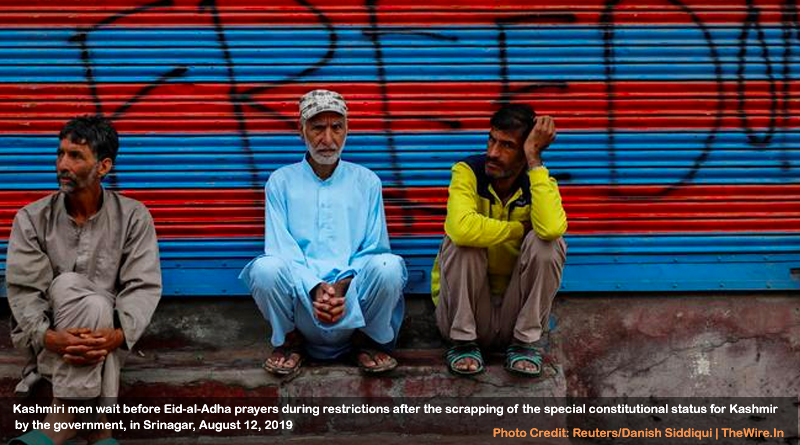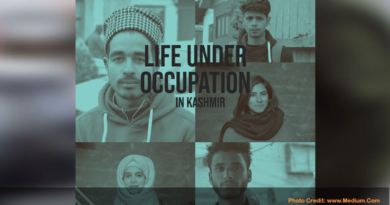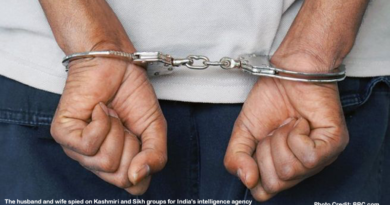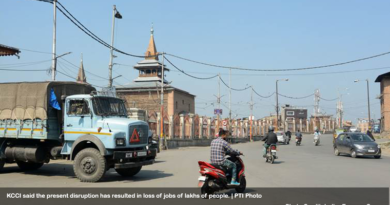2019 is the Year that Changed Kashmir to the Detriment of India
The Modi government’s brutal policies towards Kashmir and Kashmiris have driven the region to look for newer ways of resistance.
In 2018, I diligently followed the trail of politics and conflict in Kashmir and – given the scale at which violence imbued civic life in the Valley – found it natural to conclude at the end of that year that in such a situation, things only tend to worsen further.
The astonishing regularity of shoot-outs in which young militants died, the massive funerals that followed, and the firearms injuries and further deaths that processionists suffered at the hands of government forces made it amply clear that there was a spiral of violence that could not be contained.
Peace in Kashmir was going to be a precarious affair. The term always had different import for Kashmir.
Instead of signifying amity and concord, it implied a period of interlude between deaths.
The killing fields of Kashmir cannot be appeased. A new generation is being raised on a diet of violence and it will be in the language of violence that they will converse. We saw that happen on February 14, 2019 when 19-year-old Aadil Dar crashed his explosive laden car into a CRPF motorcade, killing himself and 40 jawans.
The attack turned out to be the worst one in the three decades of armed conflict. Never before, even at the height of insurgency in the ’90s when support from Pakistan was at its highest, had such a devastating assault been perpetrated. It would be extremely naïve to believe that such an attack could simply be put down to a hostile neighbour looking for trouble.
A long trajectory wound its way across the body politic of Kashmir before culminating in the Pulwama attack. We cannot excise this episode out of its broader temporal context and blinker ourselves to the political matrix that animated it. We had erred when we thought the political crises in Kashmir ended by the middle of 2000s. They had only been driven into fatigue through sheer military force.
They resurfaced in 2008, riding on the wave of non-violent mass protest which was quashed ruthlessly for the next two years. As political mobilisation in its moderate forms was subdued, it gave way to violent response. That’s what happened beginning 2013, when the insurgency started intensifying in South Kashmir and flowered in full form by 2015.
In the meantime, the BJP ascended to power in the country and – guided by its own conceited belief that the region was embroiled in conflict only because previous governments had over-indulged the Kashmiris – decided to arm-twist them into renouncing not just militancy but the political aspirations which undergird it as well.
The desired result did not materialise. Instead, 2018 turned out to be more violent than any other year in the decade. Having stoked the furnace and failed to lower the heat, the government finally attempted a quack remedy: the reading down of Article 370.
If 1947 is considered by historians as a crucial year that demarcates Kashmir’s medieval history from its modern one, 2019 will be even more so because henceforth, it will spin the region off towards an even more fractious path from which it cannot be brought back.
The year 2019, furthermore, affected the political climate in Kashmir in numerous ways. For the first time since 1999, it brought India and Pakistan to a near-war situation. The air strike on Balakot and the aerial dogfight between the two countries achieved no tangible objectives for Delhi but only succeeded in reminding the international community of how potentially dangerous the conflict between the two countries can become.
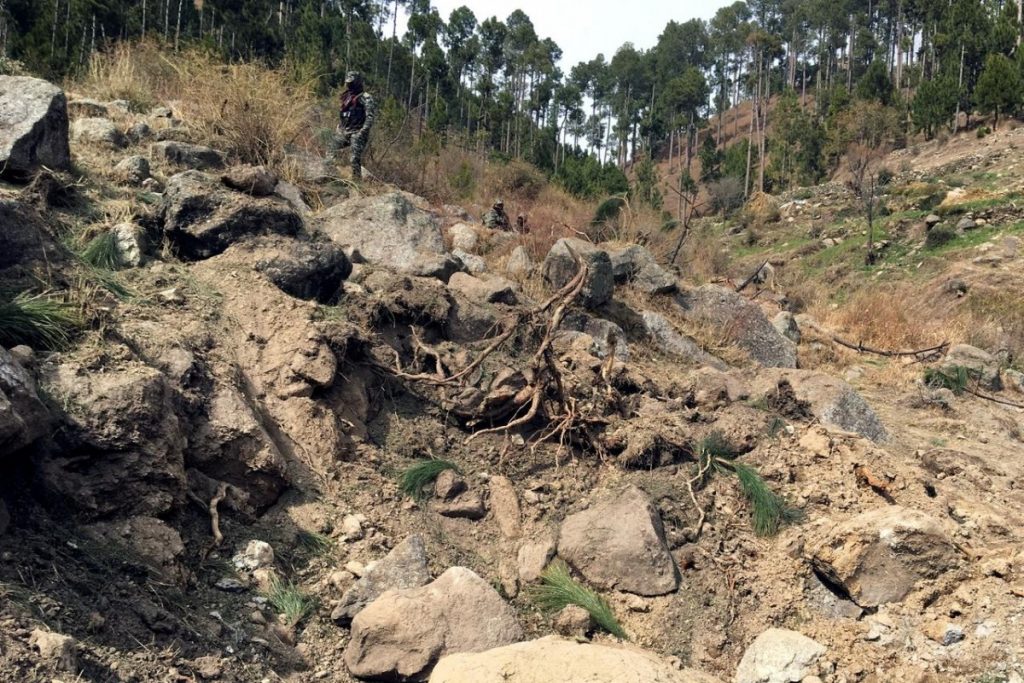
In the aftermath of the Pulwama bombing, Kashmiri students around the country faced brutal retributive attacks. The people in Valley watched with anguish as their kin in cities like Chandigarh, Delhi, Gurgaon, Lucknow, Amritsar and Bengaluru were slapped with eviction notices by their landlords, turned out of hostels, rusticated from campuses, hit with batons and treated contemptuously during a country-wide outburst of high-octane patriotism.
Meanwhile, the administration in Kashmir, driven into paroxysms of fear and confusion after the attack, embarked on drastic measures. It placed draconian prohibitions on public movement along the national highway, barring the access to this crucial road that connects the Valley with the outside world to all traffic save that of the military, twice a week.
Since the period also coincided with the export of fruit, the ban dealt a severe blow to the region’s apple economy already reeling under the devastating impact of the previous year’s early snowfall. The ban also affected pregnant women from all over South Kashmir whose access to the GB Pant Children’s Hospital, located on the highway upon entry into Srinagar city, was restricted. As doctors conceded, the arrivals of expectant mothers to the hospital declined significantly for the month during which the ban was put in place.
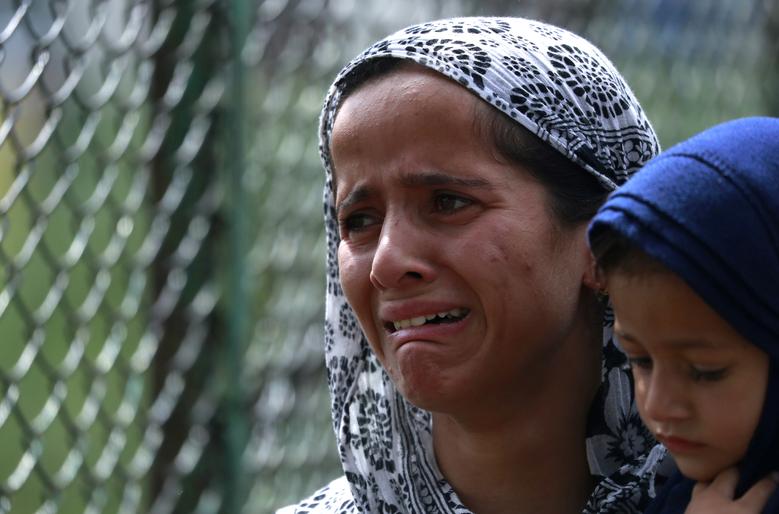
The year 2019 will also be remembered for the renewed vigour with which the state undermined press freedom in Kashmir. On February 19, the information and broadcasting ministry asked the J&K administration to track “resistance art” in the region. “It has been learnt that in Kashmir valley, there is an emerging trend of using different types of art to shape and promote an anti-India narrative,” stated the order. The decree adversely impacted Kashmiri artists.
Suhail Naqshbandi, a respected cartoonist who drew for Greater Kashmir resigned after he discovered that the paper routinely censored his content.
The government also rescinded advertisements to three newspapers in Kashmir. In June, it detained an editor of a local Urdu newspaper citing an ‘open FIR’ against him alleging that he had published material sourced from insurgents in 1995. The arbitrary nature of this arrest can be gauged from fact that the court ordered his release barely hours after the police took him.
“We have no idea who else figures in these open FIRs,” a senior editor told me then. “This incident shows that anyone of us could be detained at the whim and fancy of authorities.”
The intimidation of the media bore its dividends. Since it occurred on the heels of the parliamentary election, the press coverage accorded to mainstream politicians and their campaign speeches overshadowed the diffident calls for poll boycott issued by separatist leaders.
Acting in concert was the co-ordinated crackdown on separatists led by the Enforcement Directorate (ED), National Investigation Agency (NIA), J&K Police and Income Tax Department (IT). The crackdown started with the ban on the Jamaat-e-Islami. Later, the Home Ministry also outlawed Yasin Malik’s Jammu and Kashmir Liberation Front (JKLF).
Slowly, the net was cast wider. On March 30, the governor formed a ‘multi-disciplinary terror monitoring group’ to target ‘militant sympathisers’ among “government employees, including teachers, who are providing covert support to militant activities.” The NIA also issued summons to the kin of various separatist leaders. Both sons and also the grandson of Syed Ali Geelani who heads the Hurriyat party, have been called to Delhi, accused of receiving illicit cash.
On March 22, the ED imposed a fine of Rs 14 lakh on Geelani for unlawfully possessing foreign exchange. On April 1, the Income Tax department attached his residence in Delhi for failing to “pay the sum of Rs 3,62,62,160 for the AY 1996-97 to 2001-02”.
Mirwaiz Umer Farooq, another separatist leader, received at least three notices from NIA after which he flew to Delhi. On April 25, another separatist leader Shabir Shah’s daughter was summoned under the Prevention of Money Laundering Act by the ED in relation to a case filed against her father in 2004 when she was only five years old. Shah is already languishing in jail. Her mother burst out in anger, threatening that her daughter will be forced to seek asylum in the UK where she is currently studying if she was harassed for cases with which she had nothing to do. In July, the NIA also attached jailed Dukhtaran-e-Millat chief Asiya Andrabi’s house located in the Soura area of Srinagar under the Unlawful Activities (Prevention) Act.
Separately, on March 16, the J&K Police prepared a long list of 650 school teachers who, it suspects, are associated with ‘militancy related’ activities. The action aimed to “disincentivise every activity big or small against the state” by mounting a drive against employees whose “close relatives or extended family members are involved in separatist politics, militancy, cases of stone-throwing or have been linked to Jamaat-e-Islami.”
On April 18, the state government warned its employees against associating, directly or indirectly, with “unlawful associations,” referring to the Jamaat and JKLF, in any manner “forthwith”.
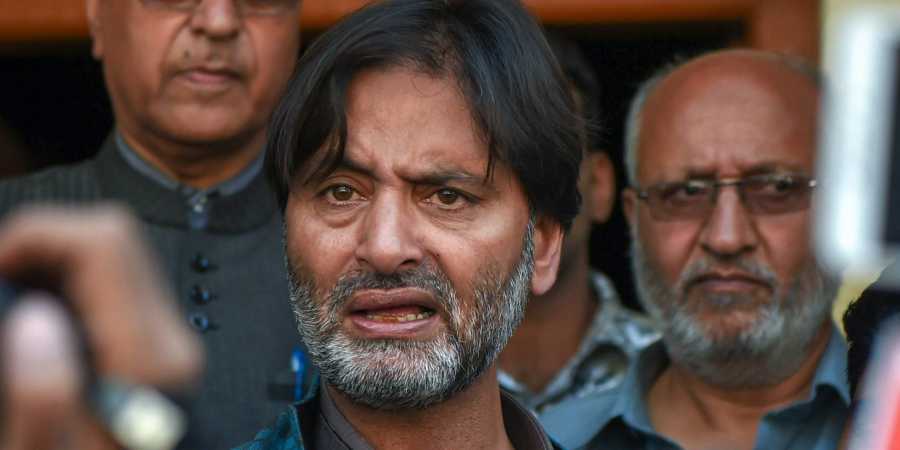
Clearly, the political intimidation in Kashmir did not arise ex nihilo after the reading down of Article 370. It was already underway.
After August 5, of course, the Modi government incarcerated almost the entire mainstream Kashmiri leadership. It did not even spare Sajad Lone, the most trusted ally of the BJP. The state entrapped most of these leaders in frivolous cases and jailed the rest under draconian laws condemned by human rights groups. By carrying out these purges, the state has effectively caused a power vacuum in Kashmir it hopes to fill by rearing a comprador class of leaders who don’t have any real political capital. It will rely on abutting them as close to the power corridors as possible so that people, once the administrative problems start taking toll, reach out to them seeking remedies.
This explains the Back to Village programs which Modi’s hand-picked bureaucrats are going out of the way to advertise. It follows a similar model of extending direct outreach to the public and forms a stepping stone on which these new crop of leaders will eventually draw.
The parliamentary elections of May threw up dismal results as the majority of voters in Kashmir boycotted the polls. Although it seems that while the ground was being cleared for the annulment of article 370 from the start of 2019, the August 5 move may have been prompted by an external stimulus.
As of June 15, the BJP was trying to extend an olive branch to the Hurriyat leaders. The ex-governor, Satya Pal Malik, who did not show any timidity in making his blatantly pro-BJP agenda manifest, urged the Hurriyat to bring all cases of human rights violations about which they had been complaining, to him directly. “Don’t treat me as an alien,” he pleaded.
This overture was fully backed by the BJP leadership in Kashmir. The posturing would not have been forthcoming had the plans to abrogate the special status been already afoot. But then, the eventful camaraderie between Trump and Imran Khan seems to have seethed New Delhi. Barely days after Khan’s Washington trip concluded, secretive and conspiratorial state orders made their way through WhatsApp and Twitter. These orders warned about the “prevailing situation.” As more soldiers and police were flown in planes into Kashmir, a dreadful panic set off. Those hours were probably the most tortuous that there had been anytime in the recent past.
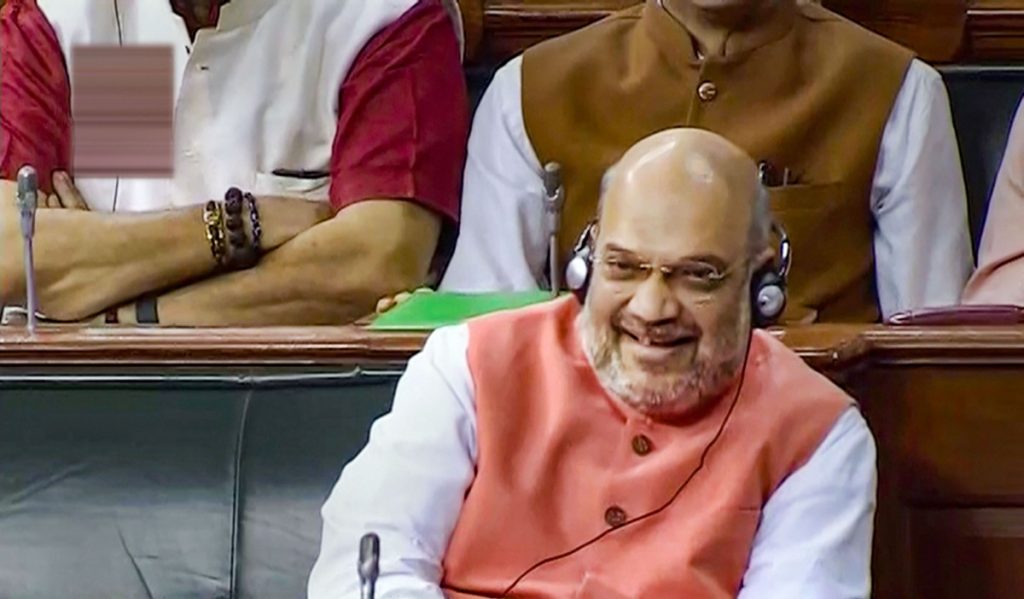
Then suddenly, Kashmir went incommunicado.
At the time of writing this piece, no form of the Internet is currently available to the people in Kashmir even as the communication ban is set to complete its fifth month. The draconian Internet blackout has been billed as the longest in a democracy. In Kashmir, it has crippled life saving initiatives, imperilled education, undermined press freedom and uprooted business in ways previously unimagined. The blackout has precipitated a sense of gloom that refuses to wear off.
Hundreds of students still crowd outside the few internet kiosks the administration has opened to file applications so that they can appear in medical exams. A task which they would have completed at the drop of hat now takes agonising effort of registering one’s name early in the morning and waiting for endless hours, sometime days at stretch, before a student’s turn arrives and she or he gets to sit before a computer system that fully monitors all online activity. Journalists crowd the dingy ‘media centre’ every day to steal a few moments of switching into the virtual world where they can check e-mail and message their friends. Young start-up entrepreneurs are abandoning their businesses in Kashmir, making off to other Indian cities.
Union home minister Amit Shah has repeated a mendacious claim ad nauseam that no person died in police action since August 5. Perhaps he is not aware of Osaib Altaf (17) who drowned after CRPF men chased him to river. Or, Yawar Bhat (15) who committed suicide after forces humiliated him. Or the three men and women who died in ‘crowd control’ measures.
As the regime cut off all communication and barred foreign journalists from visiting Kashmir, it was the local reporters who took it upon themselves – braving police beatings and detentions – to venture into the restive parts across the Valley and ferret out the true picture. Thus we got to know about stories of unspeakable torture, where detained protesters were electrocuted in their genitals and fed contaminated water.
Who will forget what agony the thousands of incarcerated people had to go through who were packed off to jails in north India even as their families failed to access legal remedies as the lawyers’ association in Kashmir went to strike because their own members had been put behind bars?
How can one forget the tortuous death to which Rizwan Asad was subjected? His post-mortem report revealed that his tormentors had run a roller on his legs. He died as his veins ruptured, blood seeping out into his tissues.
People will be hard-put to suppress images of fellow Kashmiris being booked under the draconian Public Safety Act for crimes no bigger than “having a fundamentalist bent of mind.” Who would have thought the thought-crime to which Orwell had merely alluded to in his dystopian novel 1984 would turn out to be a terrifying new reality?
It has become a boilerplate for the government to claim that all these terrible decisions are intended to fight terrorism. But what kind of militants was the regime exactly killing in 2019? The list includes Syed Ruban of Shopian who was humiliated during torture and eventually took up a gun in July 2018 and shot dead less than a year later, Shams-ul-haq Mengnoo (23), a student of Greek medicine whose IPS officer brother is posted in the North East. Mengnoo’s cousin Zubair Turray who had turned to militancy to escape incarceration under PSA, was killed last year in April on the same day that Mengnoo disappeared from home.
It also includes 22-year-old Shuaib Akhoon who had the misfortune of having his phone number found in the mobile hand-set of another youth detained for being an agitator. Since the revelation brought him under the pale of suspicion, he was required tp present himself before police and army officials regularly. Ultimately, he thought it best to join a militant group instead. When the security forces killed him and two others earlier this year, they declared Baramulla district “militancy-free.”
Sixteen-year-old Saqib Shafi Dar of Arihal, Pulwama, the son of a carpenter, was among the demonstrators protesting the death of militants Saddam Padder and Muhammad Rafi in May 2018 when his face was riddled by pellets fired by forces. One month later he too joined the militants.
In January 2019, Dar’s relatives recovered his fully charred body from an encounter site at Khonmoh. Inayat Bhat (19) of the same village remained an ‘active militant’ only for 48 hours after announcing his entry before the security forces hunted him down in an open field in Drabgam in Pulwama. Idrees Bhat (17) of Arwani, Bijbihara was allegedly harassed by the security forces and also booked under PSA before he signed up to militancy. He died in February.
In March, the security forces killed Tahir War of Sopore who became a militant allegedly to escape harassment from police who routinely questioned him about his brother, a former militant. Suliman Ahmad of Uthmulla, Shopian and Shabir Ahmad of Tujan Pulwama were both policemen with the J&K police before they defected to the militants’ side and ended up shot dead less than 24 hours after they announced it.
A large number of these young men had joined the militancy only in 2018, which indicates that their decision to take up arms had arisen out of recent compulsions. That puts a question mark on the effectiveness of the government’s use of forcible disarmament as a solution to the problems in Kashmir at the expense of political dialogue.
As a journalist who toured Kashmir extensively in 2019 to study Islamist militant groups, I discovered that most recruits to Ansar Ghazwat-ul Hind (AGuH), the al Qaeda affiliated terror group, hailed from Awantipora and Tral regions. It turned out AGuH wasn’t even a pan Pulwama phenomenon, let alone pan Kashmir. I also found that plenty of militants who raised the banner of Islamic State in Kashmir where already affiliated with an existing terror group named Tehreek ul Mujahideen. They had merely re-cast themselves in a new mould. In any case, the state killed most members of both groups in 2019. With the killing of Hameed Lelhari of AguH in November and that of Ishfaq Sofi, the last surviving IS militant, in May, the chapters of both these terror groups have practically come to an end.
The government wants everyone else to believe that Kashmir is returning to peaceful times but those who observe the events closely understand that the region has been gripped by a sense of all pervading fear.
It is intimidation that has become the instrument through which the state intends to converse. But such a pattern of power is hobbled by its own limitations, for as soon as the threat of harm is internalised, the element of fear tapers off. At present, the regime threatens Kashmiri people with flooding the state with outsiders who will compete for the same resources that they are. Cricket stadiums, government departments, buildings, flyovers and roads that were named after people known in the Valley are being renamed after those whom the Kashmiris hardly associate with.
The state has indicated it will overturn Urdu as official language. What point does it serve to empower the revenue officialdom which is susceptible to bribery, to speed up the acquisition of land in Kashmir?
What happens when Kashmiris decide they cannot take any more?
The new arrangements that the regime hopes to put in place will have to operate in a Kashmir held down by military muscle and the politics of fear. Will the state perpetually jail the people it has picked up? Or will it continue to deprive Kashmiris of internet?
Right from 1947, Kashmir has been familiar to periodic uprisings. The politics of civil disobedience is coded into their very DNA. Kashmir erupted in 1953 after Sheikh Abdullah was unceremoniously deposed barely five years after J&K’s accession to India. In 1963, the mysterious disappearance of the holy relic from Hazratbal sent thousands marching on the streets.
Even as the grip of the Indian state over them was tightening, they kept the politics of self-determination secretly alive in form of the Plebiscite Front for 22 years. Finally, by the end of the 1980s, this movement segued into a full blown revolt. It will take an overambitious leap of faith to believe that this historically evolved process has simply come to an end as on August 5.
Having tried it all – that is to say an armed guerrilla movement, peaceful mass resistance, terrorism and stone pelting – Kashmiris will attempt to explore avenues of struggle and resistance so far untried. They will contemplate new responses.
And if, by chance, they go the same way that Iran did in 1979 – there are indeed strong parallels between ferment-suffused pre-revolutionary Iran and Kashmir today – it will precipitate cataclysmic events in South Asia, causing further human suffering.
That’s the price that everyone will have to pay for Modi’s ill-thought out, ideologically-driven policies.
Shakir Mir is a Srinagar based journalist.
Published in The Wire on Jan 2, 2020
Courtesy:
https://thewire.in/rights/2019-kashmir-pulwama-article-370

